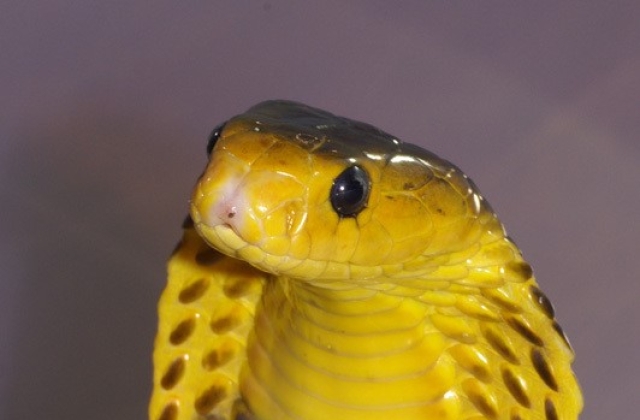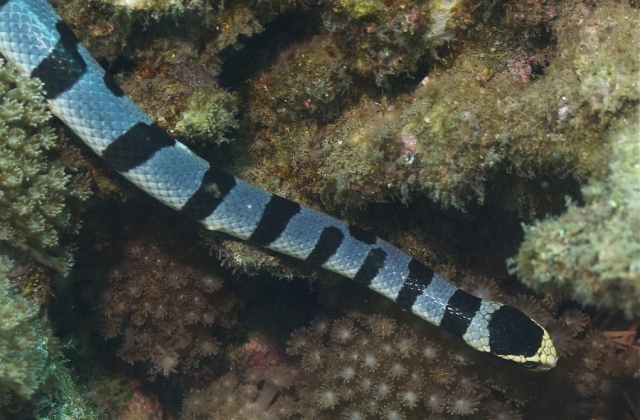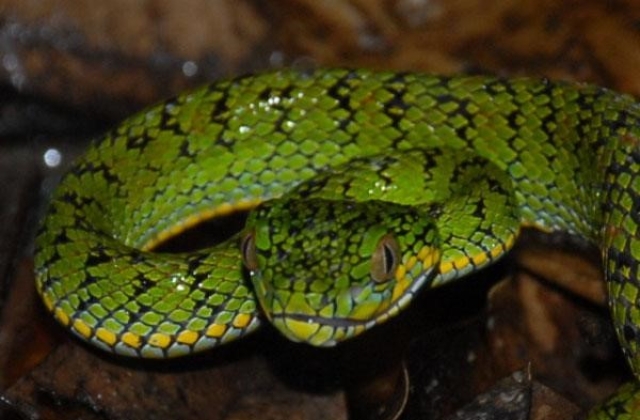The Philippines is home to some of the most ecologically unique and fascinating wildlife on the planet - on both land and sea - and Uncharted Philippines can take you right into the heart of some of the country’s most diverse regions. It’s no surprise that some of the most dangerous and fascinating snakes reside in the Philippines. Take a look at some of the reptile beauties on this list.
 photo by Harold van der Ploeg (via Wikipedia Commons)
photo by Harold van der Ploeg (via Wikipedia Commons)
The Samar Spitting Cobra
The scientific name for this snake is Naja samarensis, but it is also called “Peters' Cobra,” “Southern Philippine Cobra” or “Visayan cobra.” This striking yellow and black cobra is fond of eating rodents, frogs and other small reptiles, which often places its hunting grounds close to human habitations. This is unfortunate for people and the Samar cobra, as its nervous personality makes it more prone to strike and spit. As a member of the spitting species of cobras, when this snake is cornered and defensive, its venom can reach up to 2m (6 feet)! While the spray of venom is not especially harmful to intact skin, these cobras aim for the face and eyes, and it can cause blindness if not flushed and treated right away.

The Yellow-lipped Sea Krait
This venomous sea snake, Laticauda colubrina, is also known by the names banded sea krait or colubrine sea krait and is found in the waters of the Indo-Pacific region. It’s recognizable by the black and silvery bands, as well as the slightly yellow snout. It hunts eels and small fish and spends the majority of its time in the water, swimming with a paddle-like tail. However, it does have an affinity for land when it’s time for eating, resting, and reproducing, which means humans do run across this dangerous snake occasionally. Thankfully, it’s a shy species and prefers to avoid people and only attacks defensively.
 photo by (https://www.wikidata.org/wiki/Q643226)
photo by (https://www.wikidata.org/wiki/Q643226)
The Schultze Pit Viper
This green dazzler, Trimeresurus schultzei, is endemic to the Philippines, being found on the islands of Palawan, Balabac, and Culion. It tends to dwell in forested areas, preferring to perch in trees where its brilliant green color acts as camouflage. Its striking scales, golden eyes, and red-tipped tail have made it a target of international pet traders, especially in European markets. However, much of its natural habitat is on protected lands, offering it some refuge. This snake, like many vipers, is also known to bear live young instead of laying eggs. It feeds on rodents, frogs, birds, and small mammals and its venom is hemotoxic (destroys blood cells) making it a concern for humans, though it’s not known to hunt near human habitats.
 photo by (http://snakesarelong.blogspot.com)
photo by (http://snakesarelong.blogspot.com)
The Pelagic Sea Snake
This king of sea snakes, Pelamis platura or Yellowbelly Sea Snake, spends nearly all of its time in the water. It hunts, sleeps, and reproduces in the sea, taking advantage of several biological features, such as a paddle-like tail and a salt gland under the tongue that secretes the salt from ocean water it consumes. In fact, this snake is so well-adapted to water that it’s relatively helpless on land. Its venom is neurotoxic, but the low doses are not fatal to humans. It is fatal to the fish that the pelagic sea snake consumes, chewing the venom into the fish as it consumes them. You can recognize this snake by its black body and vivid yellow belly.
Ready to explore the wild wonders of the Philippines? Any of Uncharted Philippines' tours and treks will have you immersed in the raw, untouched beauty of this archipelago. Discover the magic of the Philippines for yourself.

 photo by (http://snakesarelong.blogspot.com)
photo by (http://snakesarelong.blogspot.com)